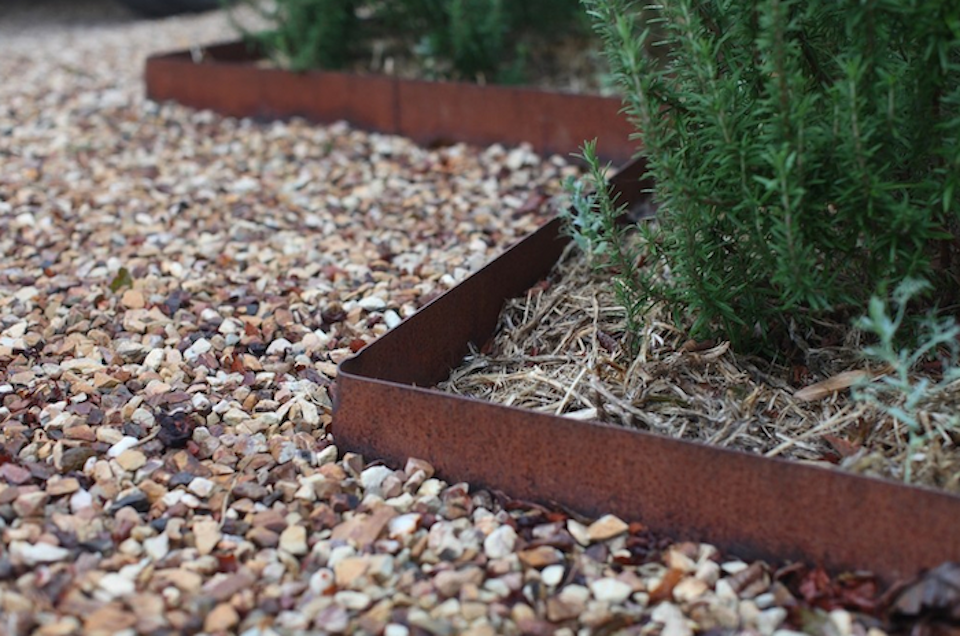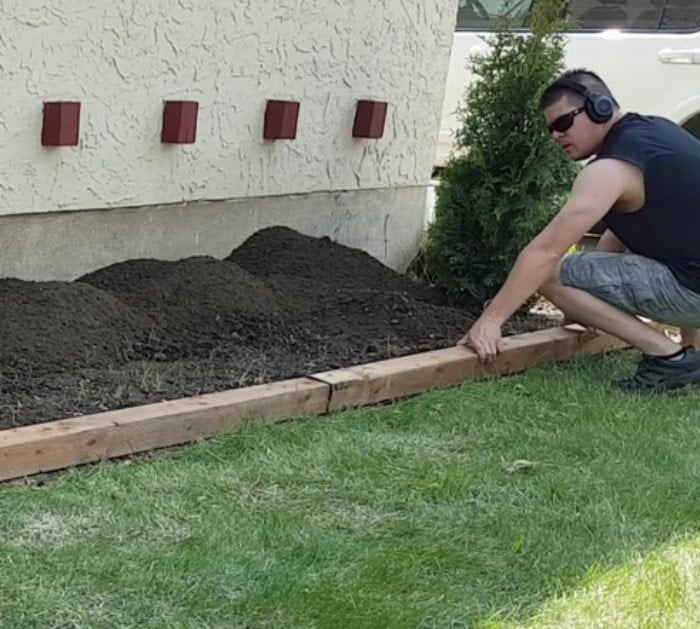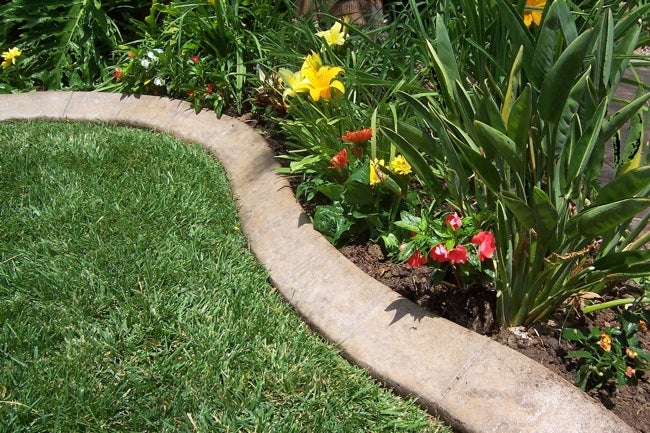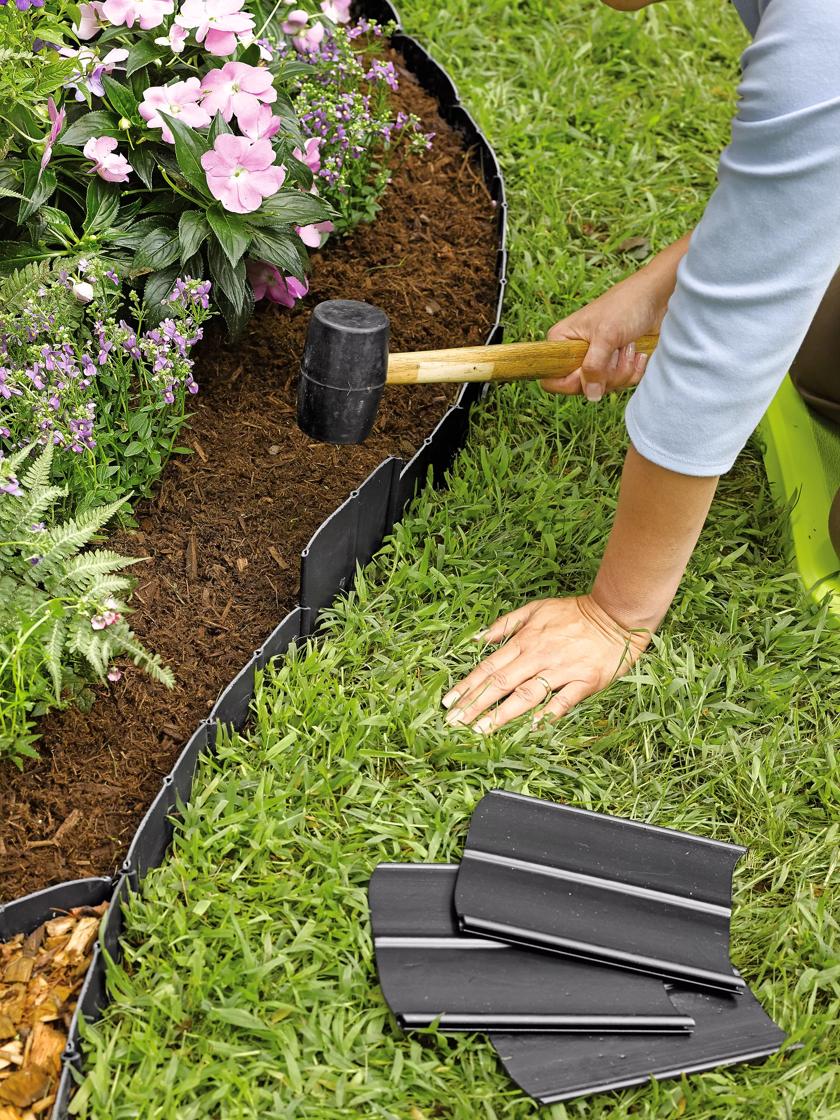How To Get Crisp Clean Edges For Your Landscape Beds
How to Get Crisp Clean Edges for Your Landscape Beds
Crisp, clean edges are the finishing touch that can make your landscape beds look their best. They can also help to prevent weeds from encroaching on your beds and making them look unkempt.
There are a few different ways to get crisp clean edges for your landscape beds. The best method for you will depend on the size and shape of your beds, as well as your personal preferences.
Here are a few of the most popular methods:
- Use a half-moon edger. A half-moon edger is a tool with a curved blade that is used to cut a clean edge in the soil. It is a relatively easy tool to use, and it can be effective for creating straight or curved edges.

- Use a spade. A spade is a more basic tool, but it can also be used to create crisp clean edges. To use a spade, simply dig a trench along the edge of your bed, being careful to keep the trench straight or curved as desired.
- Use a garden hose. If you are creating a straight edge, you can use a garden hose to mark the desired line. Once the line is marked, you can use a shovel or spade to dig along the line to create the edge.

- Use landscape fabric. Landscape fabric is a weed barrier that can be used to help prevent weeds from encroaching on your landscape beds. To use landscape fabric, simply cut it to fit the size of your bed and then bury it along the edge of the bed.
- Use mulch. Mulch can also be used to help prevent weeds and create a natural-looking edge for your landscape beds. To use mulch, simply spread it around the edge of your bed, leaving a few inches of space between the mulch and the plants in your bed.
No matter which method you choose, it is important to keep your edges well-maintained. This means trimming any stray grasses or weeds that start to grow over the edge, and refreshing the mulch or landscape fabric as needed.
With a little care and attention, you can easily get crisp clean edges for your landscape beds that will add beauty and curb appeal to your home.
Here are a few additional tips for getting crisp clean edges for your landscape beds:
- Start by removing any weeds or grass that are growing along the edge of your bed. This will make it easier to create a clean edge.
- Use a sharp tool. A dull tool will make it more difficult to get a clean edge.
- Work slowly and carefully. Don't rush, and take your time to create a straight or curved edge as desired.
- Reapply mulch or landscape fabric as needed. Mulch and landscape fabric can break down over time, so it is important to reapply them as needed to keep your edges looking their best.
With a little effort, you can easily get crisp clean edges for your landscape beds that will add beauty and curb appeal to your home.
If you're looking for a way to create crisp, clean edges for your landscape beds, a landscape bed edger is the perfect tool for the job. These versatile machines can cut through even the toughest soil, and they come in a variety of sizes and styles to fit your needs.
At Garden Wiki, we offer a wide selection of landscape bed edgers from leading brands like STIHL, E-Z Trench, and Turf Teq. We also have a team of experienced landscapers who can help you choose the right edger for your project and answer any questions you have.
To learn more about landscape bed edgers, visit our website today. We have a wealth of information on our site, including:
- How-to guides on how to use a landscape bed edger
- Product reviews of the latest and greatest edgers on the market
- Tips and tricks for creating beautiful landscape beds
We also offer free shipping on orders over $500, so you can get your new edger without having to leave the comfort of your home.
FAQ of landscape bed edger
- What is a landscape bed edger?
A landscape bed edger is a tool used to create a clean, defined edge between a landscape bed and the surrounding lawn or walkway. It usually has a sharp blade that cuts through the soil and turf, leaving a neat, straight edge.
- What are the different types of landscape bed edgers?
There are three main types of landscape bed edgers: manual, power, and electric. Manual edgers are the simplest and most affordable type. They are powered by muscle strength and require the user to push or pull the edger along the desired line. Power edgers are more powerful than manual edgers and can be used to edge larger areas more quickly. They are powered by a gas or electric motor. Electric edgers are the most powerful type of edger and are best suited for edging large areas of hard surfaces, such as concrete or asphalt.
- How deep should I edge my landscape beds?
The depth of your landscape bed edge will depend on a number of factors, including the type of plants you are growing, the size of your beds, and your personal preference. In general, a depth of 2-4 inches is sufficient for most landscape beds. However, if you are growing plants with deep roots, you may need to edge your beds deeper.
- How do I edge my landscape beds?
To edge your landscape beds, first mark the desired edge with a garden hose or string. Then, use your landscape bed edger to cut along the marked line. Be sure to edge in both directions to create a smooth, even edge.
- What are some tips for edging landscape beds?
Here are a few tips for edging landscape beds:
- Edge your beds when the soil is moist but not wet. This will make it easier to cut through the soil and prevent the edge from crumbling.
- Wear gloves and long pants to protect yourself from the sharp blade of the edger.
- Be careful not to cut any underground utilities.
- If you are edging a large area, take breaks often to avoid fatigue.
Image of landscape bed edger
- Metal edging: This type of edging is made of metal and is typically available in a variety of colors and styles. It is durable and long-lasting, but it can also be more expensive than other types of edging.

- Plastic edging: This type of edging is made of plastic and is typically less expensive than metal edging. It is also available in a variety of colors and styles. However, plastic edging can be more susceptible to damage from the elements than metal edging.
- Wood edging: This type of edging is made of wood and can add a natural touch to your landscape. It is also relatively inexpensive. However, wood edging can rot or warp over time, and it may require more maintenance than other types of edging.

- Stone edging: This type of edging is made of stone and is very durable. It can also add a touch of elegance to your landscape. However, stone edging can be more expensive than other types of edging.

- Cement edging: This type of edging is made of cement and is very durable. It can also add a touch of permanence to your landscape. However, cement edging can be more expensive than other types of edging.



Post a Comment for "How To Get Crisp Clean Edges For Your Landscape Beds"